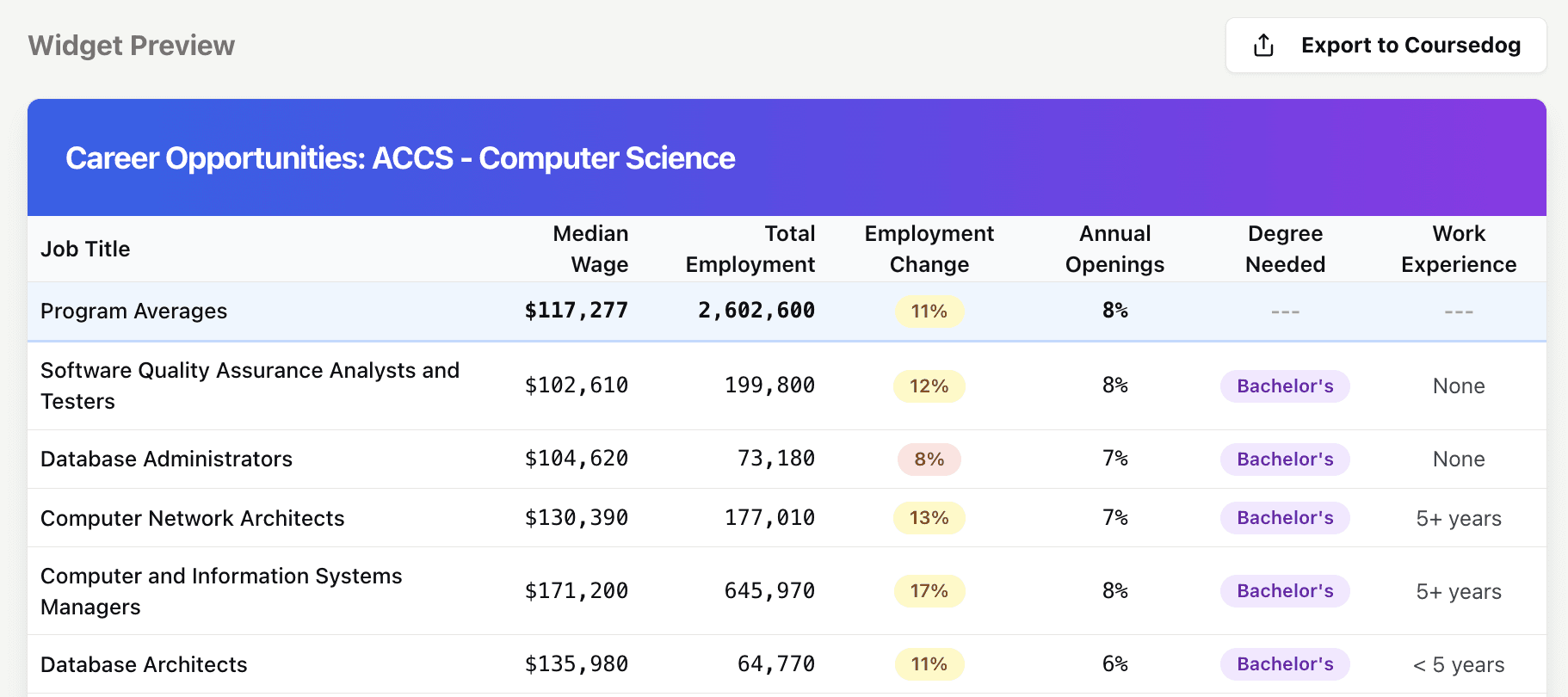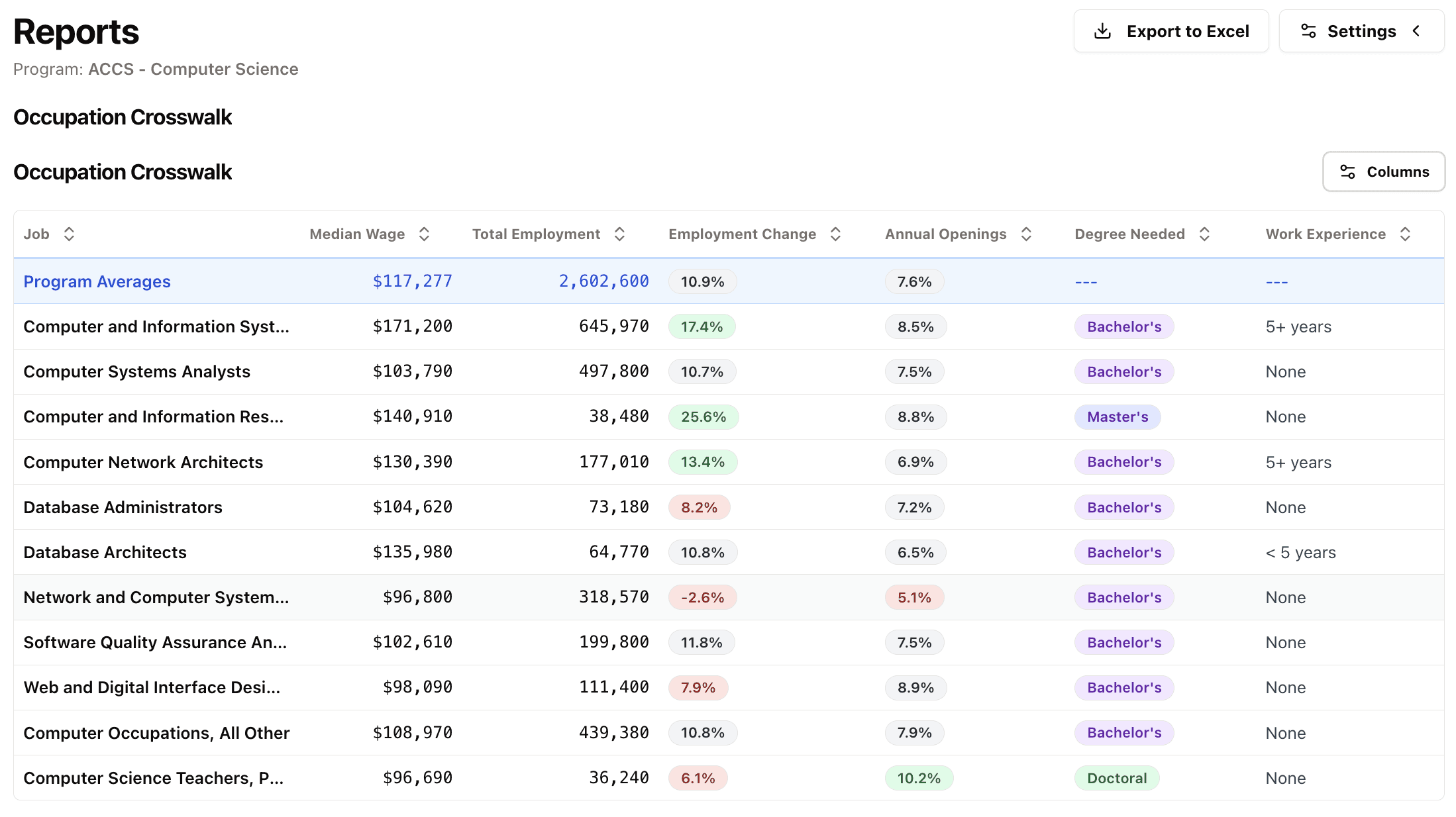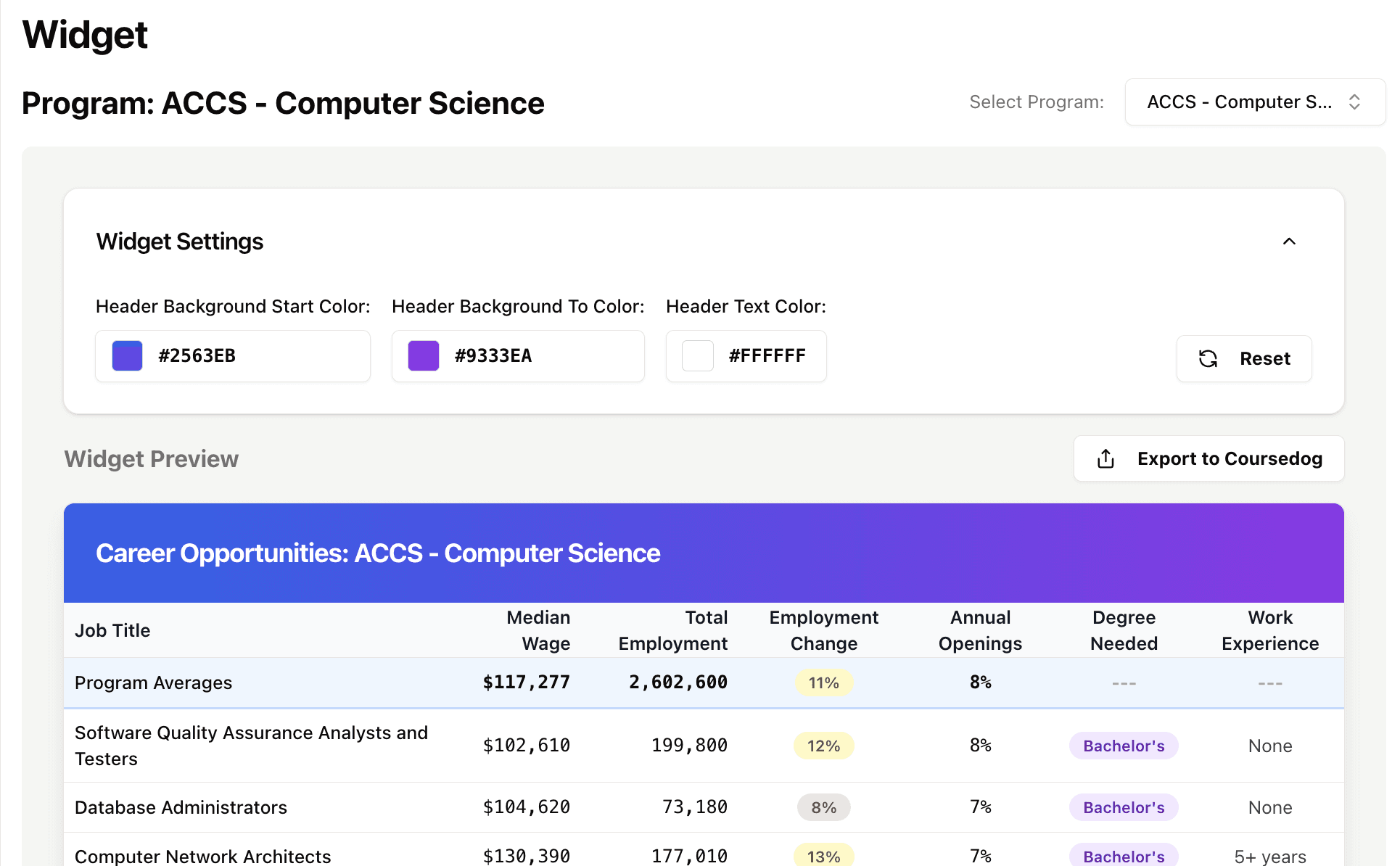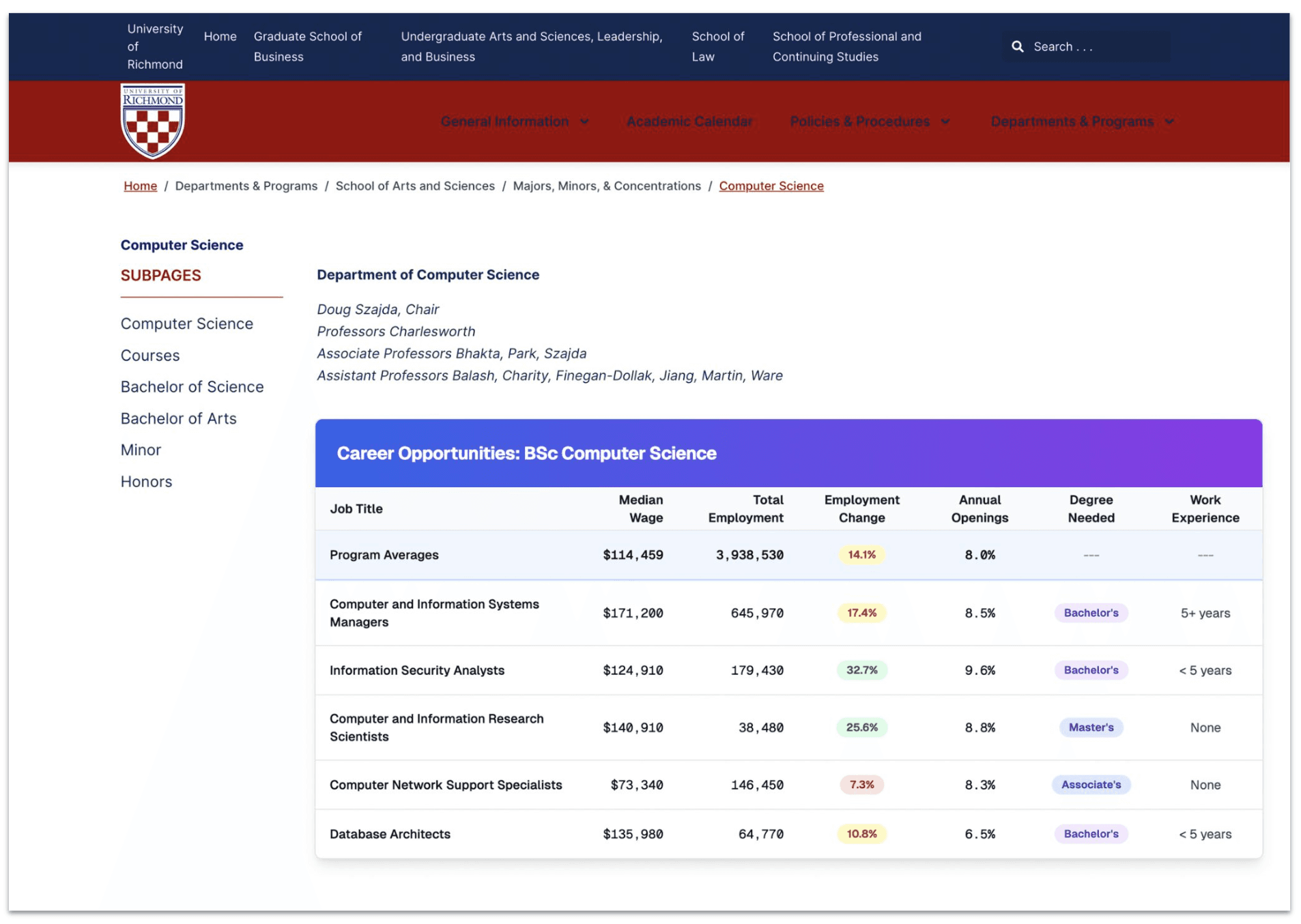Tuesday, January 14, 2025
Job Match

Match Programs to Jobs Instantly: How Mapademics Connects Curriculum to Career Outcomes
In an era of growing demand for workforce-aligned education, colleges and universities are under pressure to ensure their programs lead to real jobs. But identifying the right job targets—and proving your students are prepared—has traditionally required manual research, guesswork, or expensive third-party consultants.
Mapademics changes that.
With the Job Match feature, Mapademics automatically scans your existing curriculum and matches it to relevant occupations—whether from a national job database or specific employer targets. It's a lightweight, zero-integration tool that helps institutions bridge the gap between coursework and career.
Step 1: Scan Your Curriculum for Skills
As with all Mapademics workflows, you start by uploading syllabi, course descriptions, or catalog entries—no integration or IT support required.
Mapademics analyzes the content using proprietary AI and extracts:
- Workforce-relevant skills
- Industry-recognized competencies
- Learning outcomes tied to job functions
This process works for individual courses or entire academic programs, making it scalable across departments.
Step 2: Match Skills to Real Jobs

Once Mapademics identifies the skills in your curriculum, it automatically matches them to occupational profiles.
You can match against:
- National labor data, pulled from Mapademics' proprietary job database
- Custom job descriptions from local or regional employers
- Workforce development targets, such as WIOA-funded roles or apprenticeship-aligned jobs
This means you can validate alignment to jobs in healthcare, IT, manufacturing, education, and beyond—with no manual mapping required.
Example: ACCS Computer Science
In this example, a Computer Science program is matched to a series of relevant occupations, such as:
- Software Quality Assurance Analysts
- Computer Network Architects
- Computer and Information Systems Managers
- Web Designers
- Postsecondary Teachers
Each job is ranked by alignment strength and includes additional data (see below).
Step 3: View Detailed Job Intelligence

For each job match, Mapademics pulls in key labor market data to give you a full picture of opportunity:
- Median Wage: Expected salary range for the role
- Total Employment: Number of current jobs in the field
- Employment Change: Projected job growth rate
- Annual Openings: Estimated number of openings per year
- Degree Required: Minimum education credential
- Experience Needed: Typical years of prior experience
This turns the skills you teach into real, quantified career opportunities—grounded in live labor market trends.
Step 4: Share Job Matches with Stakeholders
Once you've created a Job Match report, Mapademics makes it easy to share across your institution and with prospective students:
Option 1: Widget Export
Create a branded, interactive widget with no code required. Embed it on:
- Program pages
- Career services portals
- Enrollment landing pages

Option 2: Catalog Integration
With one click, export the widget to academic catalog platforms like Coursedog, allowing students to browse real job outcomes directly alongside their course options.

This is a powerful tool for:
- Admissions and recruitment – Use it at college fairs or in enrollment materials
- Academic advising – Help students select courses based on career outcomes
- Career counselors – Match students to jobs they're qualified for at graduation
- Grant compliance – Demonstrate alignment to workforce and economic development priorities
Why Institutions Use Job Match
- Zero technical lift – Upload and match without IT or LMS integration
- Employer engagement – Show how programs align to real hiring needs
- Student ROI – Give students visibility into what their degree can lead to
- Equity & access – Help first-generation and underserved students connect degrees to jobs
Final Thoughts
With Mapademics Job Match, your institution can quickly and clearly answer the question every student and employer is asking:
What jobs does this program actually prepare students for?
And best of all—you can do it without new software integrations, training, or technical barriers.
Ready to dive in?
Connect with our friendly team to learn more about how Mapademics can help your institution.